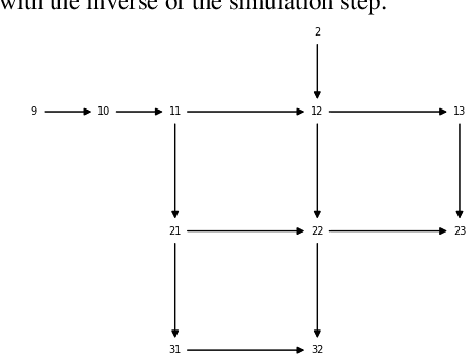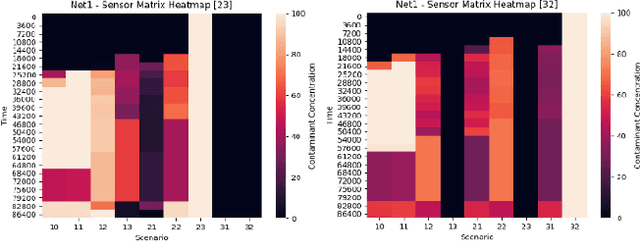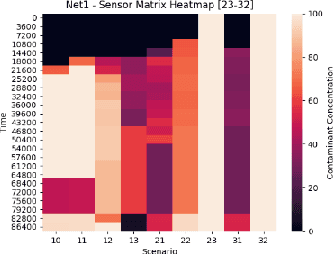Risk Aware Optimization of Water Sensor Placement
Paper and Code
Mar 08, 2021



Optimal sensor placement (SP) usually minimizes an impact measure, such as the amount of contaminated water or the number of inhabitants affected before detection. The common choice is to minimize the minimum detection time (MDT) averaged over a set of contamination events, with contaminant injected at a different location. Given a SP, propagation is simulated through a hydraulic software model of the network to obtain spatio-temporal concentrations and the average MDT. Searching for an optimal SP is NP-hard: even for mid-size networks, efficient search methods are required, among which evolutionary approaches are often used. A bi-objective formalization is proposed: minimizing the average MDT and its standard deviation, that is the risk to detect some contamination event too late than the average MDT. We propose a data structure (sort of spatio-temporal heatmap) collecting simulation outcomes for every SP and particularly suitable for evolutionary optimization. Indeed, the proposed data structure enabled a convergence analysis of a population-based algorithm, leading to the identification of indicators for detecting problem-specific converge issues which could be generalized to other similar problems. We used Pymoo, a recent Python framework flexible enough to incorporate our problem specific termination criterion. Results on a benchmark and a real-world network are presented.
 Add to Chrome
Add to Chrome Add to Firefox
Add to Firefox Add to Edge
Add to Edge